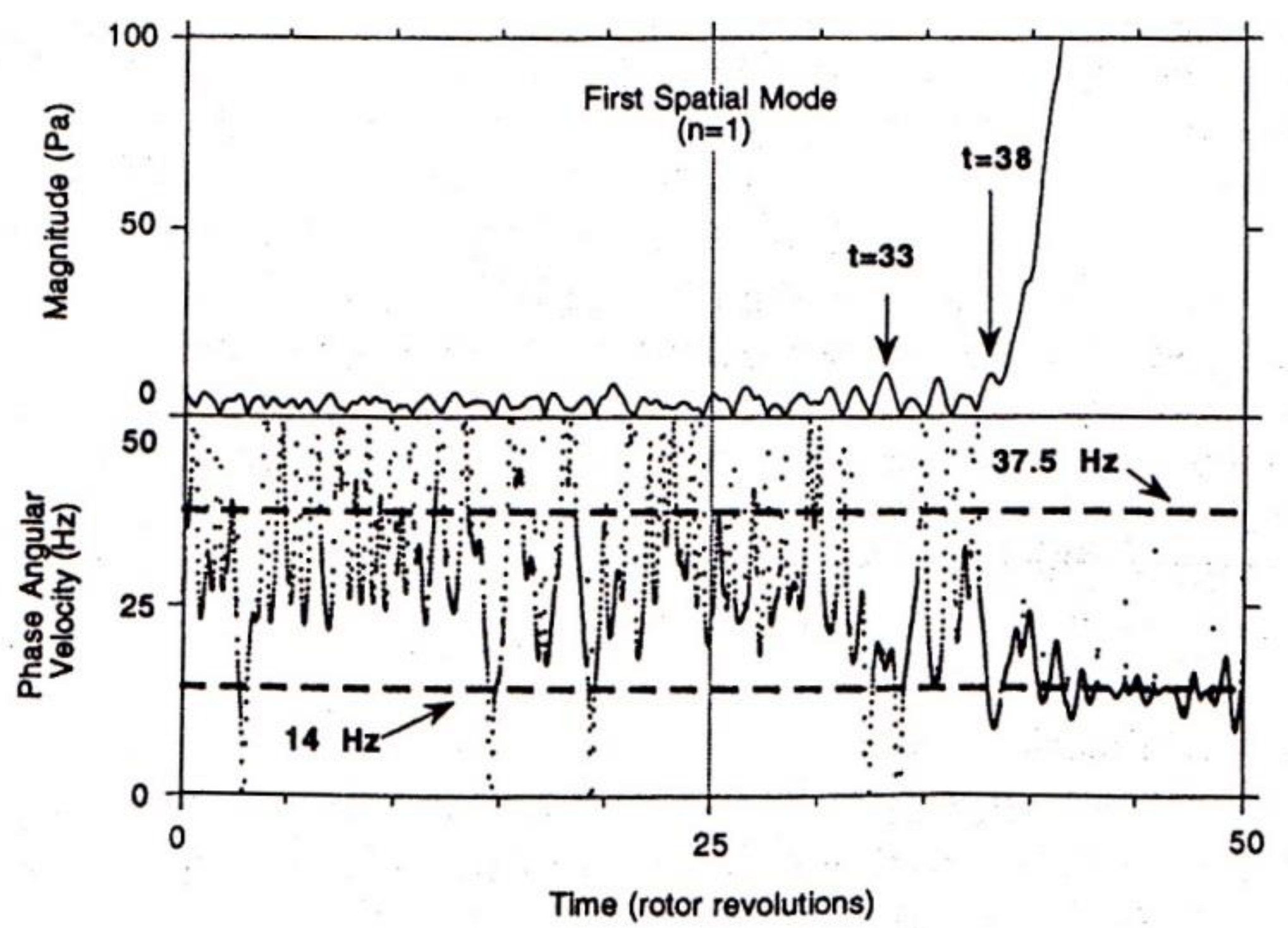On Initiation of Stall in Axial Flow Compressors
Abstract
:Conflicts of Interest
References
- Lawless, P.B.; Kim, K.H.; Fleeter, S. Characterization of Abrupt Rotating Stall Initiation in an Axial Flow Compressor. J. Propuls. Power 1994, 10, 709–715. [Google Scholar] [CrossRef]
- Owczarek, J.A. On a Wave Phenomenon in Turbines. J. Eng. Power 1966, 88, 262–276. [Google Scholar] [CrossRef]
- Owczarek, J.A. Analysis of an Axial Compressor Blade Vibration Based on Wave Reflection Theory. J. Eng. Gas Turbines Power 1984, 106, 57–64. [Google Scholar] [CrossRef]
- Owczarek, J.A. Erratum: Analysis of an Axial Compressor Blade Vibration Based on Wave Reflection Theory. J. Eng. Gas Turbines Power 1984, 106, 919. [Google Scholar] [CrossRef]
- Owczarek, J.A. Wave Reflections in Subsonic Axial Flow Turbo-Machines. In Proceedings of the AIAA/SAE/ASME/ASEE 28th Joint Propulsion Conference and Exhibit, Nashville, TN, USA, 6–8 July 1992. Paper No. 92-3075. [Google Scholar]
- Owczarek, J.A. On the Phenomenon of Pressure Pulses Reflecting Between Blades of Adjacent Blade Rows of Turbo-machines. J. Turbomach. 2011, 133, 021016. [Google Scholar] [CrossRef]
- Owczarek, J.A. Erratum: On the Phenomenon of Pressure Pulses Reflecting Between Blades of Adjacent Blade Rows of Turbo-machines. J. Turbomach. 2012, 135, 0270011. [Google Scholar]

© 2017 by the author. Licensee MDPI, Basel, Switzerland. This article is an open access article distributed under the terms and conditions of the Creative Commons Attribution (CC BY) license (http://creativecommons.org/licenses/by/4.0/).
Share and Cite
Owczarek, J.A. On Initiation of Stall in Axial Flow Compressors. Int. J. Turbomach. Propuls. Power 2017, 2, 5. https://doi.org/10.3390/ijtpp2020005
Owczarek JA. On Initiation of Stall in Axial Flow Compressors. International Journal of Turbomachinery, Propulsion and Power. 2017; 2(2):5. https://doi.org/10.3390/ijtpp2020005
Chicago/Turabian StyleOwczarek, Jerzy A. 2017. "On Initiation of Stall in Axial Flow Compressors" International Journal of Turbomachinery, Propulsion and Power 2, no. 2: 5. https://doi.org/10.3390/ijtpp2020005




